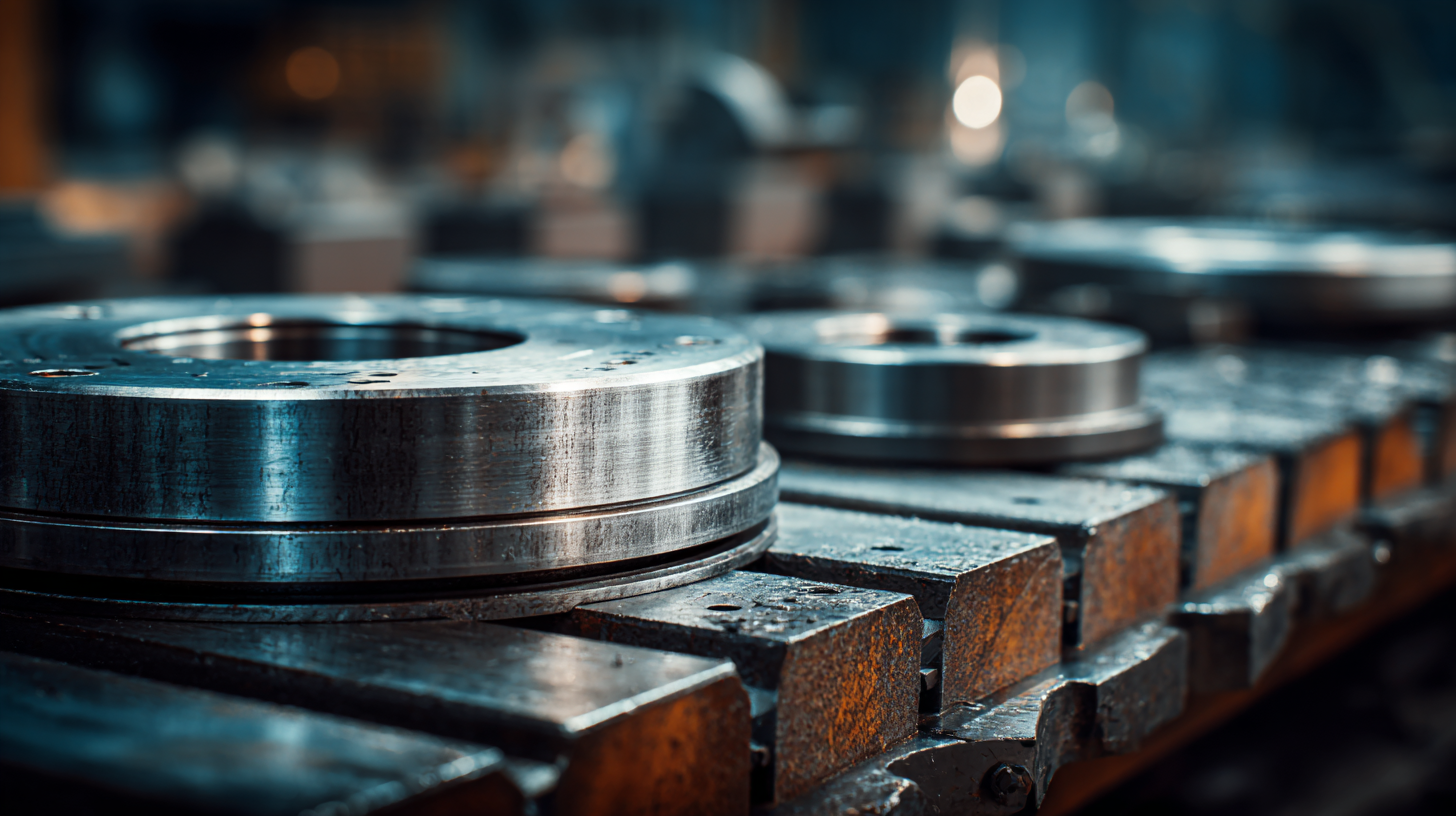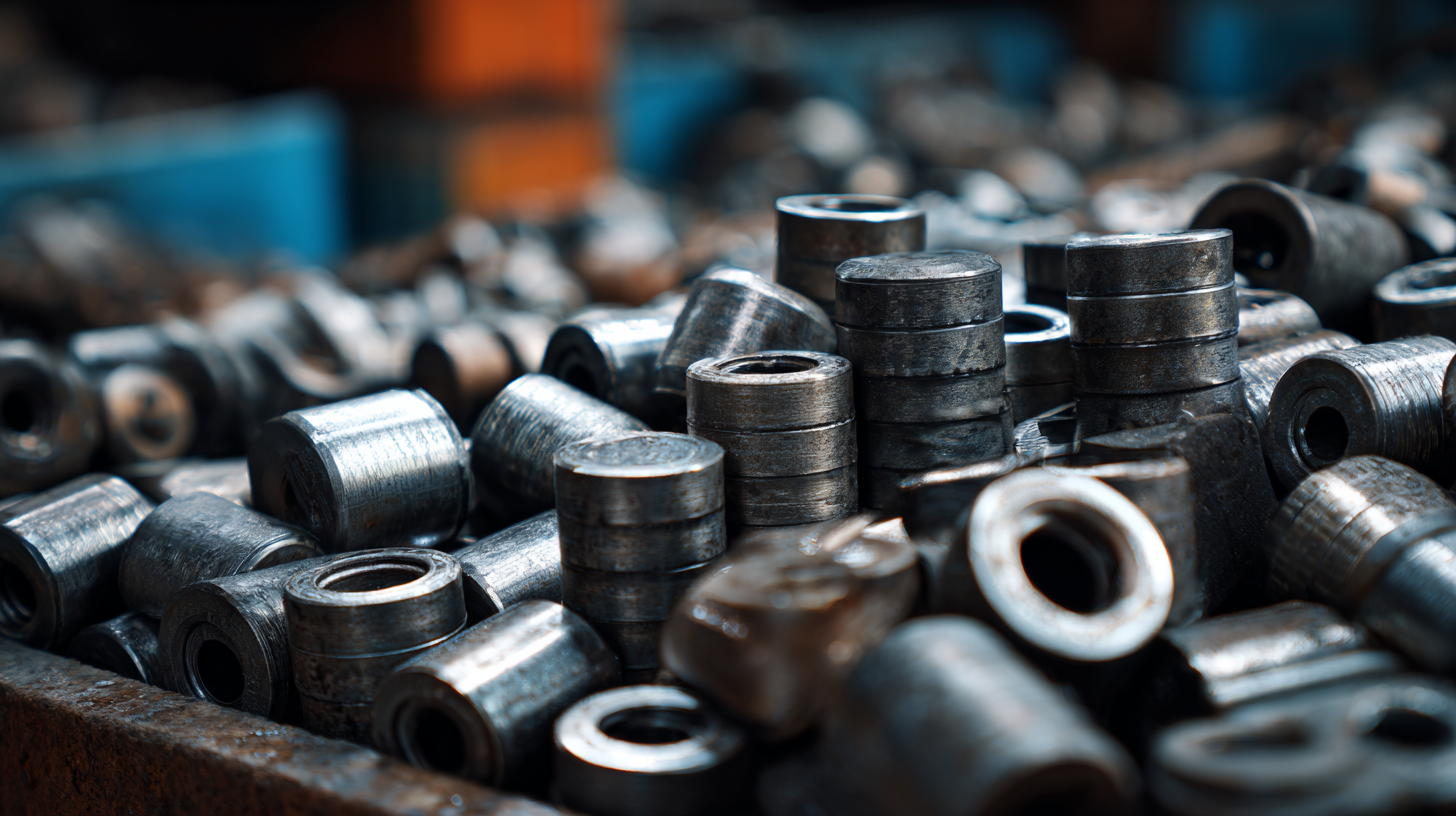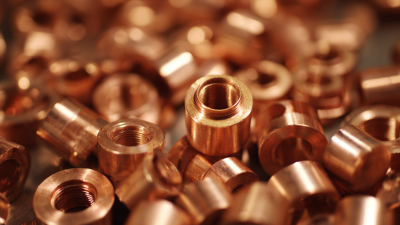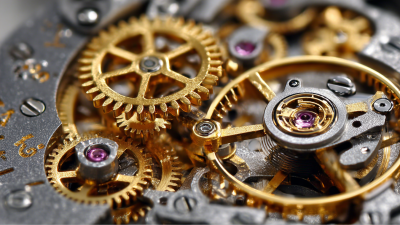 The durability of steel parts is a critical factor that influences the performance and longevity of various industrial applications. According to a report by the American Iron and Steel Institute, steel is renowned for its high tensile strength and resistance to wear, making it a preferred material in sectors ranging from automotive to construction.
Industry statistics reveal that components made from steel can endure extreme conditions, with fatigue resistance levels significantly higher than those of aluminum counterparts.
For example, a recent study indicated that steel parts exhibit a lifecycle durability that outlasts other materials by nearly 50%, enhancing operational efficiency and reducing maintenance costs.
This exploration of the incredible durability of steel parts not only underscores their importance in manufacturing but also highlights the critical role they play in advancing industrial innovation and sustainability.
The durability of steel parts is a critical factor that influences the performance and longevity of various industrial applications. According to a report by the American Iron and Steel Institute, steel is renowned for its high tensile strength and resistance to wear, making it a preferred material in sectors ranging from automotive to construction.
Industry statistics reveal that components made from steel can endure extreme conditions, with fatigue resistance levels significantly higher than those of aluminum counterparts.
For example, a recent study indicated that steel parts exhibit a lifecycle durability that outlasts other materials by nearly 50%, enhancing operational efficiency and reducing maintenance costs.
This exploration of the incredible durability of steel parts not only underscores their importance in manufacturing but also highlights the critical role they play in advancing industrial innovation and sustainability.
Steel is renowned for its remarkable durability, a characteristic that is deeply rooted in its fundamental properties. The alloy's high tensile strength allows it to withstand significant stress and strain, making it ideal for heavy-duty applications in construction, automotive, and aerospace industries. This inherent strength is primarily due to its molecular structure, where iron atoms are tightly packed, providing a robust framework that resists deformation under load.
Moreover, steel's durability is further enhanced by its resistance to wear and corrosion. The addition of various alloying elements such as chromium, nickel, and molybdenum contributes to the formation of protective oxides on the surface, which can effectively mitigate rust formation and wear. This makes steel parts not only strong but also long-lasting, capable of maintaining integrity and performance even in harsh environments. Understanding these fundamental properties of steel helps industries select the right materials for specific applications, ensuring the longevity and reliability of their products.
| Property | Measurement | Typical Value | Impact on Durability |
|---|---|---|---|
| Yield Strength | MPa (Megapascals) | 250 - 1300 | Higher yield strength improves resistance to deformation under stress. |
| Tensile Strength | MPa | 400 - 1800 | Higher tensile strength increases the ability to withstand pulling forces. |
| Hardness | Brinell Hardness Number (HB) | 120 - 600 | Increased hardness improves wear resistance and extends service life. |
| Fatigue Limit | MPa | 200 - 700 | Higher fatigue limit decreases the likelihood of unexpected failure under cyclic loads. |
| Corrosion Resistance | Rating Scale | 1 - 5 | Higher ratings indicate better protection against environmental degradation. |
Steel parts have gained recognition across various industries for their exceptional durability and longevity. According to a report by the Steel Manufacturers Association, steel components can last over 50 years in demanding conditions, significantly outperforming materials like aluminum and plastic, which typically have lifespans of 20 to 30 years. The inherent strength of steel allows it to withstand heavy loads and resist wear and tear, making it an ideal choice for applications in construction, automotive, and manufacturing sectors.
The global steel market continues to highlight these durability benefits, with the World Steel Association reporting that over 70% of steel produced is recycled, reinforcing its sustainability and long-term usability. Additionally, studies show that structures built with steel have a reduced maintenance frequency, with maintenance costs averaging 40% lower compared to those made from other materials. This combination of longevity and cost-effectiveness presents a compelling case for the continued use of steel parts in modern engineering and design, underscoring a trend that emphasizes not just initial cost but also lifecycle efficiency.
The comparison between steel and alternative materials in terms of durability reveals some compelling insights. Steel has long been recognized for its superior strength and long lifespan; its tensile strength can reach up to 550 megapascals (MPa), which is significantly higher than that of most alternative materials like aluminum or composites, often limited to around 350 MPa. Moreover, a comparative life cycle analysis indicates that steel components can last up to 50 years under typical load conditions, while plant-based materials, for example, show a reduced longevity and may require replacement or repair more frequently.
Recent studies, such as those assessing fatigue life in structural components, underscore the critical importance of in engineering decisions. Traditional materials often fall short under cyclical loads, while steel’s fatigue limit is generally around 200 MPa, contributing to its reputation as a reliable choice for high-stress applications. The utilization of innovative manufacturing techniques, including advanced welding methods, continues to enhance the mechanical properties of steel, reinforcing its position as a durable material against emerging alternatives. Such comparative analyses not only highlight the enduring advantages of steel but also guide industries towards data-driven material selection for sustainable and resilient infrastructure.

To maintain and extend the life of steel parts, implementing best practices in care and handling is crucial. Regular inspections can help identify early signs of wear and corrosion, enabling timely maintenance that prevents larger, costly repairs. Coating steel parts with protective materials can also significantly reduce the risk of rust, enhancing durability. Regular cleaning to remove contaminants and debris will further aid in preserving the integrity of the metal, ensuring that it remains functional for a longer period.
Additionally, proper storage conditions play an integral role in steel part longevity. Keeping parts in a dry, controlled environment minimizes exposure to moisture and chemicals that can cause deterioration. When operating heavy machinery with steel components, adhering to manufacturers' operating guidelines ensures parts are not subjected to undue stress or abuse, which can lead to premature failure. By following these best practices, industries can maximize the performance and lifespan of their steel components, leading to increased efficiency and reduced operational costs.
As the steel industry evolves, the focus on innovative technologies to enhance durability continues to intensify. In 2023, the United States saw a substantial market value of $16.88 billion for hot-dip galvanizing, with projections indicating an increase to $17.36 billion in 2024 and reaching $20.12 billion by 2029. This growth underscores the ongoing demand for advanced steel solutions that offer superior performance and longevity, especially in critical applications like nuclear power structures.
The development of steel structures for nuclear power has reached a pivotal stage, transitioning from early light water reactor designs to the more sophisticated third and fourth-generation technologies. These advancements are crucial for improving the safety and efficiency of nuclear facilities, reflecting industry commitments to sustainable energy solutions. Furthermore, as electric vehicles gain traction, the anticipated market growth for battery enclosures highlights the importance of durable steel components that can withstand the rigors of modern transportation demands. This convergence of steel technology with emerging sectors indicates a promising future where durability is continually enhanced through innovation.







